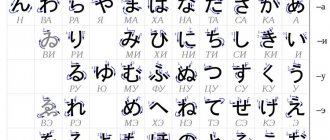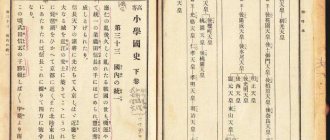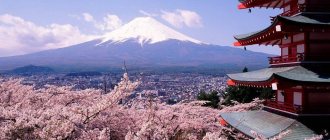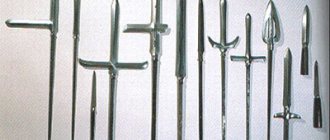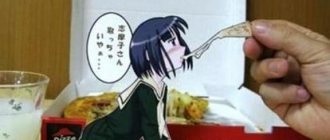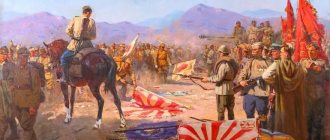Varieties
Each nation has its own foundations and set of traditions, which reflect their embodiment in the field of clothing. Japan is no exception. It branches into two sources - wafuku (traditional style) and yofuku (Western style). The types of Japanese clothing are varied and exclusive.
The Japanese have idolized nature since ancient times and treated it as a living creature. Each element showed the care of the master who worked on it - be it stone, wood, clay or fabric. Artists sought to see a lot in little, so they tried to reflect their independent vision. The national costume has gone through a long period of evolution - more than a thousand years. It is characterized by the intricate geometry of the design and the uniqueness of the composition. The very first Japanese national clothing looked like a poncho, framed by a belt. In winter, they were worn in several pieces, which served as the basis for creating a traditional multi-layered robe.
The ancient Japanese always wore hakama (men) and mo (women). This clothing, created using special Japanese patterns, was a skirt made of several pieces of fabric attached to long belts. The length of this skirt reached the floor. Such clothes did not emphasize the figure and were a kind of decoration.
Another type of national clothing of Japan was the haori jacket, which had a swing cut and also fell down. The usual kimono was preceded by another type of clothing - kosode, which was worn by both girls and men. It had the shape of a wide robe with a straight cut and elongated sleeves. Traditionally, kosode was used as an element of outerwear.
Ancient Japan assigned the kimono the status of a national costume, the name of which comes from the phrase “thing to wear.” The attribute has a simple cut. Previously, such clothing spoke about a person’s status – her age, position, rank, even her mood. Kimono models for girls have many ornamentation options.
As for the feet, they wore special silk socks and appropriate shoes. Traditionally, there were several types of shoes:
- geta – national Japanese shoes in the form of wooden lasts;
- zori - they were distinguished by a soft sole, which was attached to the leg with a leather belt.
Japanese style in modern clothing has acquired the status of a real cult and is very different from the perception of wardrobe by a European resident. Here, in a piece of matter, one sees an expression of one’s versatile inner world. Colorful acid shades that violate traditional principles can sometimes look overly vulgar and heavy. Japanese fashion excludes any imitation or inheritance. Each image is a specific feature, a key detail and an exceptional expression of self. As for color preferences, there are purely black tones or deep shades of green, pink, blue, and burgundy.
Japanese designers began to surprise their audience with innovations in clothing relatively recently - about a hundred years ago. Fascinated by the European trend, the masters began to create new creative collections that rejected everything old. Famous Japanese designers made Japanese tailoring popular and world famous. The whole world knows fashion designers like Yamamoto and Hanae Mori. They took European images as a basis, complementing them with oriental elements. Yamamoto became famous for his design of asymmetrical pieces in black and white shades. His asymmetrical cut of his clothes became literally iconic.
In 2007, John Galliano showed the world his clothing line in the style of Japanese origami. The art of paper folding influenced the fashion designer and was embodied in his fantastic works.
Modern clothing from Japan destroys ideas about world fashion. She skillfully combines geometric shapes and shapelessness. Here you can find both bright saturated colors and black and white robes. It is worth mentioning separately about Japanese school fashion. Since the 1920s, sailor motifs have been popular in the country. Today, the Japanese uniform has uniform standards. Japanese schoolchildren were captivated by one of the main stylized trends in uniforms - the kawaii subculture. A uniform with a jacket is also in great demand among the school audience. Eton jackets and boleros are especially in demand. Schoolgirls love to wear sundresses and overalls-skirts with suspenders. The form in public institutions is simpler than in private ones.
Until the seventh grade, boys must wear shorts to school, regardless of weather conditions. After seventh grade they wear gakuran pants and a jacket. This uniform is black, brown or dark blue. The choice of shirts for jackets is also limited - only white is allowed.
Achieving the Perfect Japanese Summer Look
Now the question is how do we get the perfect Japanese summer look? While three trends are enough, we're not going to keep repeating three looks, are we? The Japanese are quite experimental when it comes to clothing. It's like a challenge to stand out a little from the crowd.
There are three tips and tricks that will help you create the perfect summer looks all summer long. You'll realize that even though Japan is very warm in the summer, style isn't worth sacrificing. So, without further ado, let's look at the top three tips for achieving your perfect summer look in the Land of the Rising Sun!
If there is little snow, there will be no harvest: December 16 is Ivan the Silent Day
Lost weight: what Sofia Tarasova sacrificed for the sake of “VIA Gra” (new photos)
Women's jeans: before you buy them, you need to pay attention to one detail
Modern street fashion
Japanese street style is a popular trend in modern Japan, which is inherited by young girls and boys all over the world. The term Japanese style combines several directions. They are all similar and interconnected, but have a number of differences. An uninitiated person will not immediately notice the difference:
- Harajuku – the Harajuku style is considered one of the craziest, originating in the Tokyo district of the same name. Life has always raged in this territory. The direction includes a combination of national style and modern fashion elements. It is characterized by many bright accessories and decorative elements;
- Lolita is the most common style that has gained wide popularity in the West. It contains a certain cult of infantility with an emphasis on the Gothic. Here you can find corsets, frills, lace, petticoats, ribbons. The “Lolita” direction is intended to emphasize the doll-like, childish image;
- Ganguro - the style is distinguished by bleached hair, an unusual dark tan and contrasting eye makeup in black and white. This style features long eyelash extensions and bright accessories. Miniskirts, high heels - everything together makes Japanese girls look like living dolls;
- Cosplay is a role-playing outfit that imitates your favorite animated and computer characters;
- Decora – decorating an image with numerous elements. Girls wear a lot of metal jewelry, pendants, bracelets, rings, and chains. The style is also complemented by sound attributes - bells, bells;
- Ko Gal - Teenagers love to wear school uniforms. They also dye their hair blonde and apply self-tanner to their body;
- Kawaii is a kind of touching infantile style. Its adherents prefer costumes of animals or cartoon toys. The predominant colors are blue, white, pink and beige;
- Visual Key - inspired by the youth subculture that is a fan of the Japanese punk and glam rock genre. Girls prefer clothes of incompatible shades, high-heeled or platform shoes, and dyeing their hair in bright colors.
The fashionable variability of modern Japanese designers distinguishes their collections with a standard set of items interspersed with national motifs and loose-fitting elements:
- outerwear is distinguished by its straight shape, loose fit, and slightly hugging the silhouette. The clothes carefully hide the female figure and its features;
- products made from thin translucent materials, which are complemented by huge bows;
- the use of lush gathers and folds to imitate a kimono;
- the presence of pointed elements, smooth transitions, bright shiny inserts, decoration with tassels.
Japanese teenagers love high waists, multi-layered outfits, and shapelessness. The reason for this was the opinion that in oversized things a small Japanese woman looks very touching and especially fragile. Modern variations of kimonos with robes silhouettes remain relevant. Sportswear of various designs is also in fashion. Japanese designers are actively working in this direction.
visual kei
Ganguro
Decora
Kawaii
Ko Gal
Cosplay
Lolita
Harajuku
Skirt
You may not be a fan of skirts until you come to Japan and realize that all the girls here wear them. You can see why this is one of the main trends. The skirt style that is most popular is the flared, flowy style. They are cool and conservative, stylish and comfortable.
“We are still friends”: Derevianko commented on the breakup with his wife
The money tree pleases with lush flowering: my secret is in caring for the leaves
A student at the Vietnam Police Academy shared how she takes care of her facial skin.
Although regular, straight, flared skirts are very common, pleated ones have been worn no less frequently in recent years. From opaque to sheer, from multi-layered to single-layer pleated skirts - these are the styles women are choosing lately.
National Costume
Kimono is the most common traditional clothing. This is a kind of elongated robe. The product is connected at the waist with a special obi belt and has elongated sleeves. The kimono excludes the presence of any numerous details or ties. A kimono for women differs from a man's one in that it includes twelve elements and is extremely difficult to put on without someone else's participation. The robe for men is simpler, includes five parts, and has short sleeves. It is customary to tuck a kimono from left to right.
Obi is a kind of belt that allows you to tighten a kimono. The men's model is narrower and shorter than the women's. The obi, which was used by geishas, reached a meter in width, was wrapped around the waist in several layers, and was tightened on the lower back in the form of a bow. If the bow is located in the front, this indicates that the lady is married.
Yukata is a type of national clothing of Japan. It is a lightweight version of a kimono made of cotton or linen. Clothes are made without lining and are more common in the summer. This is also a common home attribute. Yukata is used after bathing. There are both women's and men's models of similar clothing.
Keikogi is a traditional costume that includes a shirt and wide pants. Mostly such clothing is common in the field of martial arts. You can often hear this combination of clothing called a kimono, which is incorrect.
Tabi are national socks, the Japanese patterns of which separate the big toe from the rest. This position of the toes allows for wearing traditional Japanese sandals - geta. These are special shoes with high soles, attached with laces or straps running from the heel to the gap in the toe. This strap separates the big and middle toe.
Hakama was the name of the fabric that was used to cover the hips in Ancient Japan. Later, the idea was transformed into loose pants with many folds, which could only be worn by samurai and clergy. Red hakama pants are also common among ladies of aristocratic status.
Japanese clothing style brought together strange silhouettes with asymmetrical cuts along with comfort - this is the starting point for all Japanese designers of our time. Popular Japanese clothing brands and brands are Anrealage, Toga, Uniqlo, Y-3.
Accessorize your style
Since the Japanese have simplified their clothing style, they compensate with accessories to further spice up their outfits. Start with the simplest summer addition: a hat. There are many styles. So even with this simple accessory you can already change the entire look. For example, bucket hats are very trendy right now.
Nothing beats a big floppy sunhat, or you can experiment a little with bucket hats or wide-brimmed hats.
Want to take it up another notch? Buy a fashionable handbag or backpack. Accessories are always a great addition to any look. Play with rings, necklaces, earrings, hair clips and ties.
Photo
School uniform in Japan
The uniform in Japan is called "fuku", and the classic school uniform is called "sera-fuku". Sera fuku traditionally consists of a blouse with a triangle collar, a red tie, and a pleated skirt. The colors most often used were blue, red and white, which is why the uniform was called the “sailor suit”.
Japan has very strict rules for wearing uniforms; schoolchildren wear them all year round. By the way, girls are not allowed to wear tights. Quite a harsh condition, as winter weather in Japan can drop below -10°C.
Initially, the school skirt covered the knees, but due to the love boom, schoolgirls tended to shorten it to look like anime heroines. Making a Japanese skirt shorter is very simple: since it has a fairly thin belt, you only need to tuck it in to turn the skirt into a mini. Japanese schoolgirls use this technique.
However, at the moment, a Japanese skirt should be no more than 15 cm above the knee, this is the Tokyo standard. It is still a staple in any Japanese schoolgirl's wardrobe.

